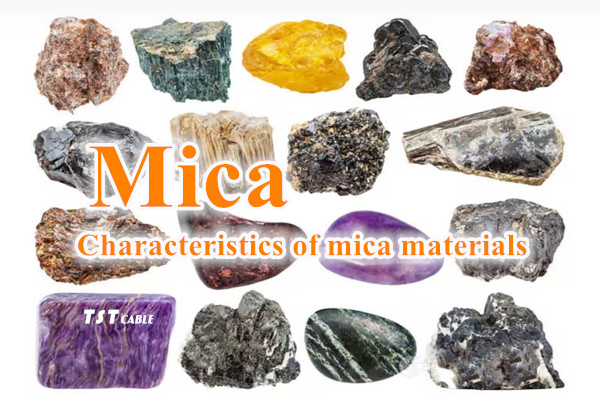
I, Introduction of mica
Mica is the general name of the mica family of minerals, the English word “Mica” comes from Latin, meaning “crumbs”. Mica is a layer structure of minerals, with very unique chemical and physical properties. Its most basic building blocks are composed of layers of oxygen ions and silicates, interspersed with other ions and molecules such as aluminum, magnesium, sodium and potassium. The molecular structure of mica exhibits a two-dimensional layered structure and is therefore considered a two-dimensional material. The crystals are in the form of pseudohexagonal sheets or plates and occasionally columns. The lamellar solution is very complete, with a glassy luster, and the flakes are elastic. Mica is highly electrically and thermally conductive and also has fairly good mechanical toughness. In addition, it has certain electrical, thermal, mechanical and optical properties, which make mica widely used in different fields.
Two,Classification of mica
The classification of mica can not only be divided according to the color, mineral composition and crystal structure, but also includes bubble pearl mica, green vesicular mica, gold mica, white mica, black mica and other types. Among them, white mica is widely used in the fields of chemical industry, electronics and electrics, and black mica is also used in building materials.
Three,Mineral Characteristics of Mica
Mica belongs to the aluminum silicate minerals, with continuous layers of silica-oxygen tetrahedral structure. It is divided into three subclasses: white mica, black mica and lithium mica. White mica, including white mica and its subspecies (sericite) and less common sodium mica; black mica, including gold mica, black mica, iron black mica and manganese black mica; lithium mica is rich in lithium oxide of various mica’s tiny scales. Industry, especially in the electrical industry is commonly used in white mica and gold mica.
The chemical formula of white mica is KAl2 [AlSi 3O10] [OH] 2, of which SiO2 45.2%, Al2O3 38.5%, K2O 11.8%, H2O 4.5%, in addition, containing a small amount of Na, Ca, Mg, Ti, Cr, Mn, Fe and F and so on.
The chemical formula of gold mica is KMg3 [AlSi3O10] [F, OH] 2, of which K2O 7-10.3%, MgO 21.4-29.4%, Al2O3 10.8-17%, SiO2 38.7-45%, H2O 0.3-4.5%, with a small amount of Fe, Ti, Mn, Na, and F and so on.
Fourth, the industry application of mica
Mica is an important chemical raw material with very high insulating and adiabatic properties, good chemical stability, resistance to strong acid, alkali and pressure, so it is an important raw material for manufacturing electrical equipment, so it can also be used as an insulating material inside the hair dryer. Mica has birefringent ability at the same time, so it is also an optical instrument material for manufacturing polarized light sheet. Mica has good mechanical, thermal and electrical properties, so it has important applications in electronics, materials, energy and other fields.
Mica ore mainly includes black mica, gold mica, white mica, lithium mica, iron-lithium mica, etc. Alluvial mica is a mixed mineral of mica and quartz. Mica is widely used in building materials industry, fire-fighting industry, fire extinguishing agents, welding rods, plastics, electric insulation, paper making, asphalt paper, rubber, pearlescent pigments and other chemical industries. The most used in industry are white mica and gold mica, and lithium mica is an important mineral raw material for refining lithium.
- Electronic field: mica is a common dielectric material, which can be used in insulators, capacitors, resistors, electric porcelain and other fields. In the electronic industry, white mica is often used as wire covering material, which can prevent wires from short-circuit and fire and other accidents. While black mica can be used to make heating panels and electronic stoves and so on.
- Material field: Mica has good mechanical and physical properties, so it can be widely used in refractories, ceramics, paints, textiles, high-temperature insulation and radiation-resistant barrier materials.
- Energy field: Mica can also be used as a new energy material. Some studies show that mica has electrochemical properties, which can be used to manufacture energy materials such as super batteries and supercapacitors.
V, Application of mica in cables
- Insulation protection: Mica has good insulating properties, which can effectively isolate the conductors in the cable and prevent current leakage and risk of electric shock. Its excellent electric insulation performance can control the electric field distribution within the electric coil, improve the voltage resistance of the electric coil, and ensure the safety and stability of cable operation.
- Fire protection: Mica is a very fire-resistant material that can withstand high temperatures, slowing down the spread of fire and reducing the damage caused by fire to wire and cable systems. This fireproof performance is especially important in high voltage cables, which need to have high insulating properties and high temperature resistance.
- Mechanical protection: Mica can also enhance the mechanical strength of the cable, improve its tensile strength and abrasion resistance, and protect the cable from external pressure and physical damage. At the same time, mica has a certain degree of toughness and mechanical strength to withstand the tensile and compression forces that cables may encounter during installation.
- Filler material: In the manufacturing process of cables, mica can also be used as a filler material to fill the gap between the insulation material and the metal conductor, making the cable more compact and sturdy, and helping to reduce cable heating.
Sixth, the environmental performance of mica
Mica has good environmental performance, non-toxic and harmless, will not cause pollution and harm to the human body and the environment. This makes mica a sustainable and environmentally friendly material choice in cable manufacturing.
As an excellent electrical insulation material, mica plays an important role in cable manufacturing. Its properties of insulation protection, fire protection, mechanical protection and environmental friendliness make mica one of the indispensable materials in the cable industry.
Also available in:
English

